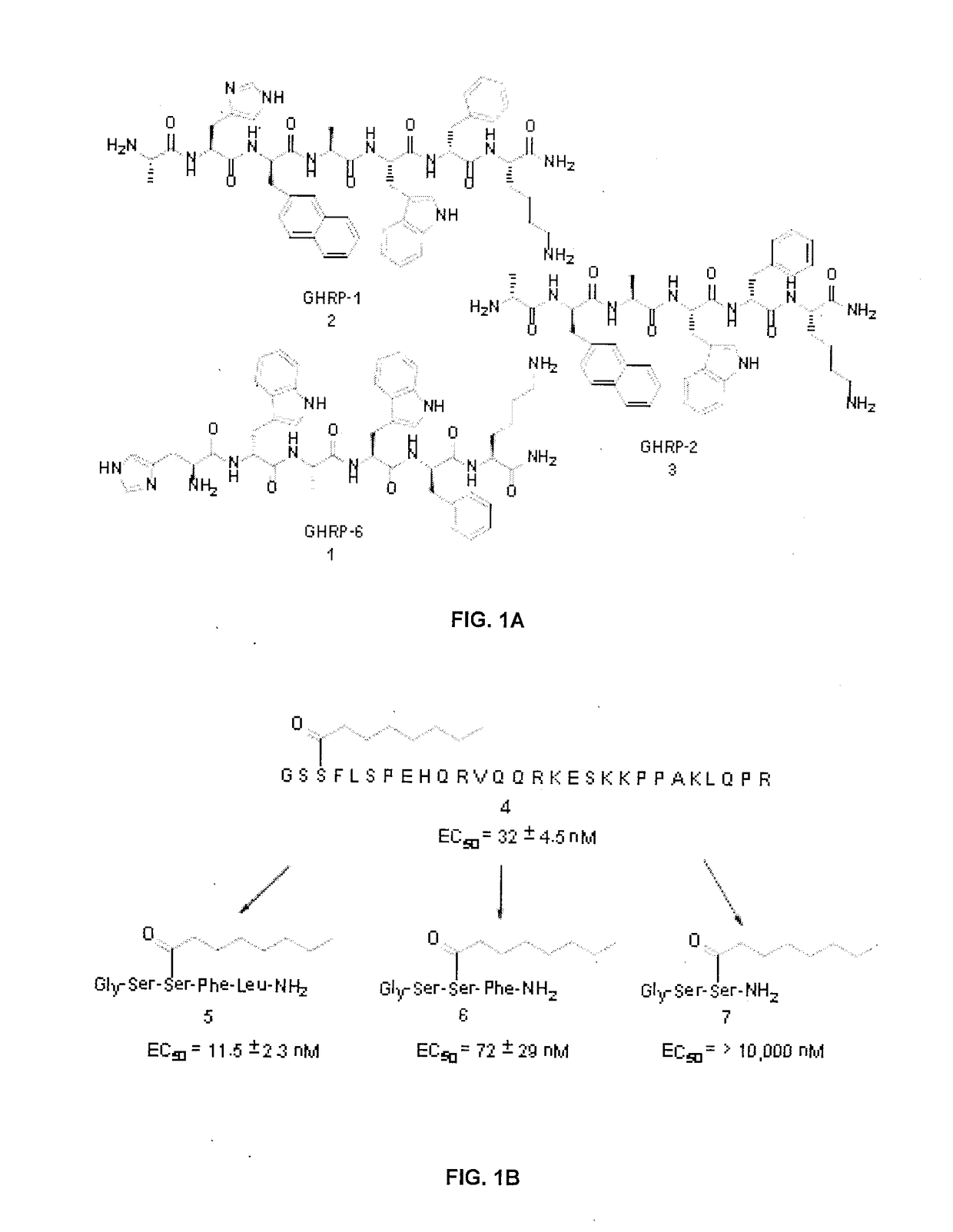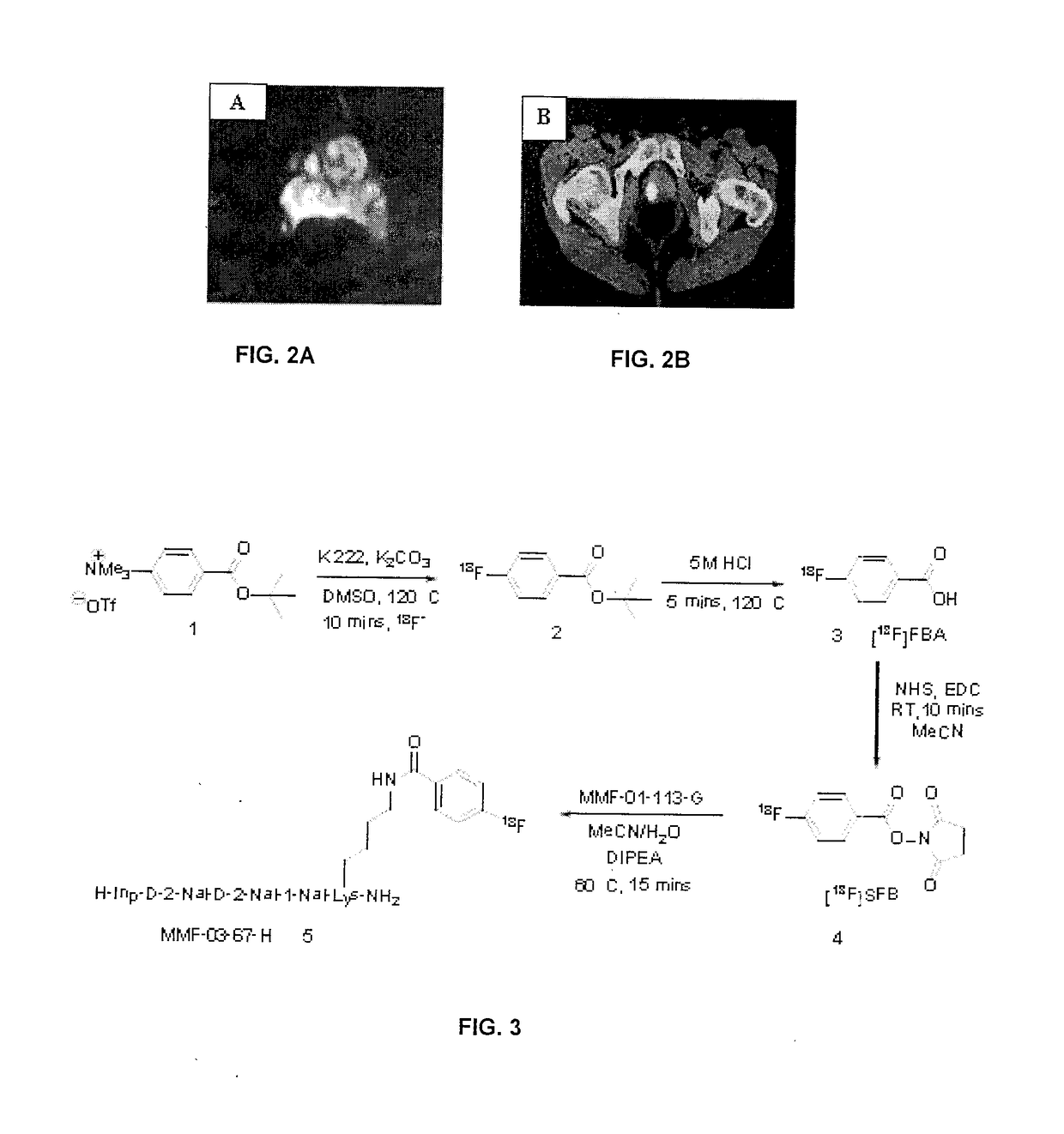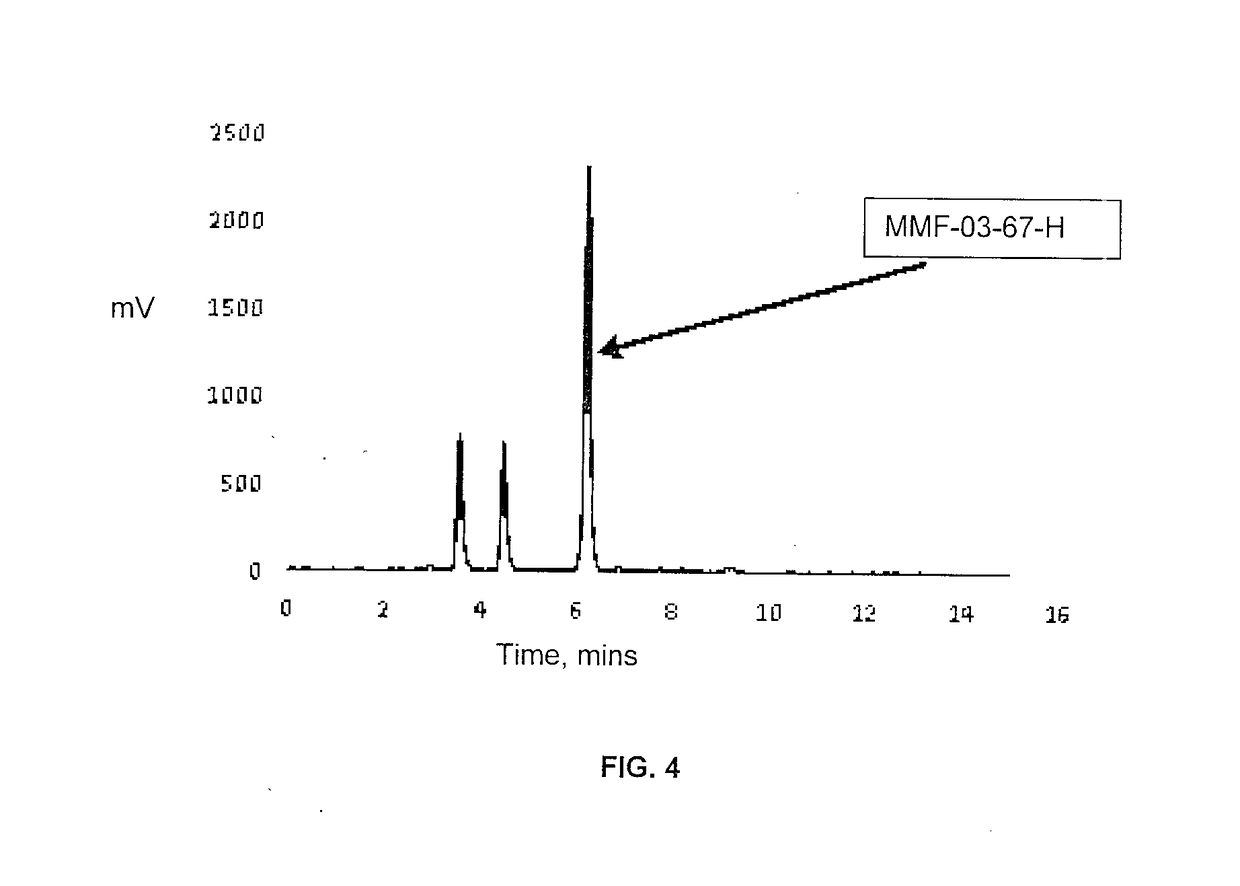Peptidomimetics for imaging the ghrelin receptor
a ghrelin receptor and peptidomimetics technology, applied in the field of peptidomimetics, can solve the problems of inability to release gh in vivo, difficult and lengthy procedures, and high cost of the therapy form, so as to stimulate gh secretion, suppress ghrelin's orexigenic effect, and increase appetite
- Summary
- Abstract
- Description
- Claims
- Application Information
AI Technical Summary
Benefits of technology
Problems solved by technology
Method used
Image
Examples
example 1
[0130]Materials and Methods
[0131]All reagents were obtained from commercial suppliers and used without further purification. Reaction monitoring was carried out by TLC using 60F254 silica coated plastic plates (EMD Chemicals Inc.), with visualization under a UV lamp (254 / 365 nm). Melting points were recorded on a Mel-Temp® 1101D digital melting point apparatus. Peptides were either synthesized manually or through the use of a Biotage® Syro Wave™ automated peptide synthesizer. Peptide vessels were shaken using an IKA® Vibrax VXR basic shaker with centrifugation performed on a Beckman Coulter™ Allegra X-30R or Fisher GS-6R centrifuge. In order to aid peptide dissolution, sonication of solutions was accomplished via a Bransonic® 2510R-MTH or Fisher F5-14 ultrasonic cleaner. A Fisher 2052 Isotemp® machine was used to heat up test tubes in the Kaiser Test. Peptides were cryodessicated using a Labconco® FreeZone Freeze Dry System. UV traces were obtained with a Waters 2487 UV / Vis Dual A A...
example 2
[0177]Using the compound G-7039 as a base, the novel conjugates of Table 2 were synthesized.
[0178]The synthesis of the precursor for obtaining TL-MF-3-2FP is shown in FIG. 7, while the synthesis of TL-MF-3-2FP is shown in FIG. 8.
[0179]Competitive binding assays were run on the compounds of Table 2 as described in Example 1. The results of the competitive binding are shown in FIGS. 47-48. The formulas of the compounds of Table 2 are illustrated in FIGS. 49 and 50.
TABLE 2Synthesized CompoundsAminoHRMSHRMSAcidIC50(calculated)(found)LogP (calc.)CompoundSequence(nM)([M + H]+)([M + H]+)LCE no.(ACD / Labs)TL-MF-5-H-Inp-(D-62.9959.48959.60LCE003354.34 + / − 0.902FP2-Nal)2-Ser-Phe-Lys(2-FP)-NH2TL-MF-4-H-Inp-(D-4.35959.48959.60LCE003364.34 + / − 0.902FP2-Nal)2-Phe-Ser-Lys(2-FP)-NH2TL-MF-3-H-Inp-D-2-0.283888.44888.32LCE003374.46 + / − 0.882FPNal-D-2-Nal-Tyr-Lys(2-FP)-NH2TL-MF-2-H-Inp-(D-60.3812.41812.41LCE003382.77 + / − 0.872FP2-Nal)2-Ser-Lys(2-FP)-NH2
example 3
[0181]Another in vitro assay performed on the 4-fluorobenzoyl agonist [1-Nal4,Lys5(4-FB)]G-7039 and the [Lys5(2-FP)]G-7039 agonist was a calcium flux dose-response assay. This experiment allows the determination of the half-maximal effective concentration (EC50) for each agonist, a measure of the concentration of the agonist required to produce 50% of the maximum biological effect resulting from ghrelin receptor activation. In this particular case, the biological effect of the peptidomimetic [1-Nal4,Lys5(4-FB)]G-7039 and the peptidomimetic [Lys5(2-FP)]G-7039 is the release of intracellular calcium ions, a process which is detected by fluorescence using a FLIPRTETRA instrument. Endogenous ghrelin was used as a control in this assay, which was performed by EMD Millipore's GPCRProfiler® service.
[0182]The calcium flux assay was carried out for both compounds [1-Nal4,Lys5(4-FB)]G-7039 (also referred to as 4-FBG-7039 in FIG. 51 and as compound MMF-01-115-H in Table...
PUM
| Property | Measurement | Unit |
|---|---|---|
| Molar density | aaaaa | aaaaa |
| Molar density | aaaaa | aaaaa |
| Molar density | aaaaa | aaaaa |
Abstract
Description
Claims
Application Information
 Login to View More
Login to View More - R&D
- Intellectual Property
- Life Sciences
- Materials
- Tech Scout
- Unparalleled Data Quality
- Higher Quality Content
- 60% Fewer Hallucinations
Browse by: Latest US Patents, China's latest patents, Technical Efficacy Thesaurus, Application Domain, Technology Topic, Popular Technical Reports.
© 2025 PatSnap. All rights reserved.Legal|Privacy policy|Modern Slavery Act Transparency Statement|Sitemap|About US| Contact US: help@patsnap.com



